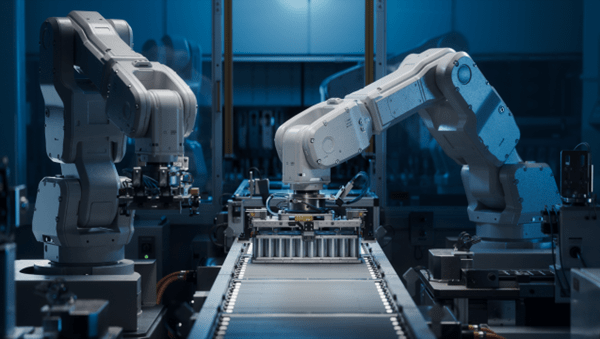Is the concept of a “sustainable data center” a paradox?
Afterall, those data centers, which we all rely on to shop online, watch videos about cats, and do business, use massive amounts of energy, which generates carbon that contributes to the most pressing challenges of our time, climate change and the need to conserve resources. Each year, data centers are responsible for between 1 and 2% of global electricity use. That may not sound like a lot, but it is and with internet access continuing to expand around the world, more and more of these energy guzzling facilities are being built.
But the answer to the question above is no. A sustainable data center isn’t a paradox. It is possible for the industry to become sustainable but only if all industry players (and that includes all of us who make use of these facilities) stop kicking the can down the road and start taking real action now.
The search is part of the problem
The drive for sustainability has never been stronger than it is today. And this goes beyond the impact that activists and celebrities like Greta Thurnberg and David Attenborough have had. I think it’s fair to say that, finally, there’s a general acceptance of the fact that climate change is real, manmade, and is already having a catastrophic impact on quality of life around the world.
Data centers can’t be blamed for our predicament; they haven’t been around long enough. Though the collective carbon footprint of all our data centers is substantial, if we turned them all off and got rid of the internet completely, this would not come close to solving the climate crisis. But the Jevon’s Effect is at play in this industry: the cheaper something becomes the more people will use it. And it’s exactly because this is such a growth market that it’s critical that, as we build more and more of these facilities, data centers must not account for an ever-growing portion of our global carbon spend. Consider the following.
Google estimates that a typical search using its services requires as much energy as it take to illuminate a 60-watt incandescent light bulb for 17 seconds. On average, an online search is responsible for about 0.2 grams of CO2. Again, that may not sound like a lot but consider the fact that the average internet user may do 4 searches each day. That’s roughly 1460 searches a year. That would be enough energy use (and subsequent carbon waste) to power that light bulb for around 7 months. Or put differently, each year, your Google searches alone generate the same amount of greenhouse gases as a car that is driven for more than a kilometer. And that’s just from one person’s searches and does not at all account for any of the other things most of us do online each day.
What can data center operators do?
Obviously the accelerated growth of our digital economy, especially during the pandemic, is good news for data center operators. Each day people and businesses are using more data, which means sky high demand for data centers. But the environmental impact of data centers is a hot topic and not every community is eager to see these facilities planted in their backyard.
Building new data centers with excellent sustainability performances is relatively easy. What’s much more difficult, and pressing, is how to significantly improve the performances of thousands of legacy facilities, replete with inefficient power trains, emergency generators and uninterruptible power supply systems. Though many of these existing data centers have been in operation for many years, they are only partly through their lifecycles and their operators may not have business plans that involve investing in making them more sustainable, right now.
Offsetting is not the answer
One thing that would help would be to move all of these legacy data centers onto energy grids powered 100% by renewable energy. Now, I know that this is not possible in most of the world but if we want to stop passing the buck then this needs to be the goal. Currently, many operators “work on sustainability” by paying for carbon offsets. That is to say that they get the energy they need from whatever source and then pay extra money, a “green tariff” of sorts, for the portion of their energy use that’s not from a renewable source.
But this isn’t addressing the problem. It’s a bit like saying that I need not worry about the carbon produced because I took a flight (Remember those?) because I don’t eat meat. But have I really offset the emissions from that flight? No, those emissions still exist, I have just not created emissions elsewhere in the system. With companies setting net-zero carbon goals for 2030 or 2050, and many relying on offsets for the first part of that journey, there is the real danger that the can will continue to be kicked down the road, with organizations banking on some miracle innovation popping up in the future. In truth, data center operators (and all of the rest of us) are going to have stop with the accounting tricks and actually get emissions down.
Data centers and the circular economy
Like most parts of the global economy, the data center industry and the entire IT sector is too caught up in the “take, make and waste” cycle. Take for example your mobile phone. Most people keep a new phone for around two years but the phone itself should be usable for more than 5 years. What happens to that product? Does it end up in a landfill where it becomes toxic waste or is it reused somehow. Sadly, too often it’s the former instead of the latter.
The same is the case for data centers. The average life of a server is between 3 and 5 years. Obviously, some server components, such as hard drives, need to be destroyed given the very sensitive nature of their use. But what about all of the others? Sadly, most suffer the same fate as our mobile phones. Out of the 50 million tons of e-waste produced each year only a very small amount of it is recycled or reused in some way. By 2025 that figure will rise to 64 million tons of e-waste each year.
Think about IT racks. Essentially, these are the same as they have been for the past 10 years. Is it then really necessary to have all new racks whenever servers are renewed? Probably, not. Data center operators can always upgrade peripherals such as locking and power distribution strips but reuse the racks themselves. It’s a small thing but it represents the type of circular thinking that all data center operators should adopt.
We should also be a bit concerned about the promotion and reliance on lithium-ion batteries in the industry. Currently, these batteries are only 5% recyclable. What’s more, if the disassembly process goes wrong, they have a nasty habit of exploding, potentially causing fires. Here too we’re putting our stock in a fundamentally unsustainable option, and perhaps fooling ourselves into thinking a solution will arise in the future.
The role of personal responsibility
Above all, the quest to make data centers more sustainable starts with you and me. How so? Well, do you know the size of your own digital footprint? Probably not right. But remember that everything you do online creates data which is stored in data centers all around the world and that data storage uses energy which produces carbon and other greenhouse gas emissions. So, if we’re all more mindful of how we’re using data then collectively we can make a difference.

We also need to pursue sustainability in the other aspects of our lives, perhaps even more so because of our digital footprints. And you may be thinking, “But didn’t you say we should not have an offsetting mentally?”. Yes, that is true and that’s why I’ve made a case for data center operators to embrace true sustainability, namely really achieving net-zero carbon instead of just paying more money for carbon offsets. But taking personal responsibility for your own sustainability impacts is not the same as corporations buying carbon credits instead of actually reducing emissions.
When you think about the circular economy and also net-zero, ask yourself what the difference is between a circle and a zero. Once you have grappled with that, you’ll likely realize that the two go hand-in-hand.
My advice is to preach zero carbon professionally, work to really achieve, and to practice zero carbon in your personal life to really maximize your positive impact on the world.
If you’d like to learn more about how we at Arcadis support our data center clients in locating, planning, designing and building new facilities, please check out the Arcadis Data Center Location Index 2021.








